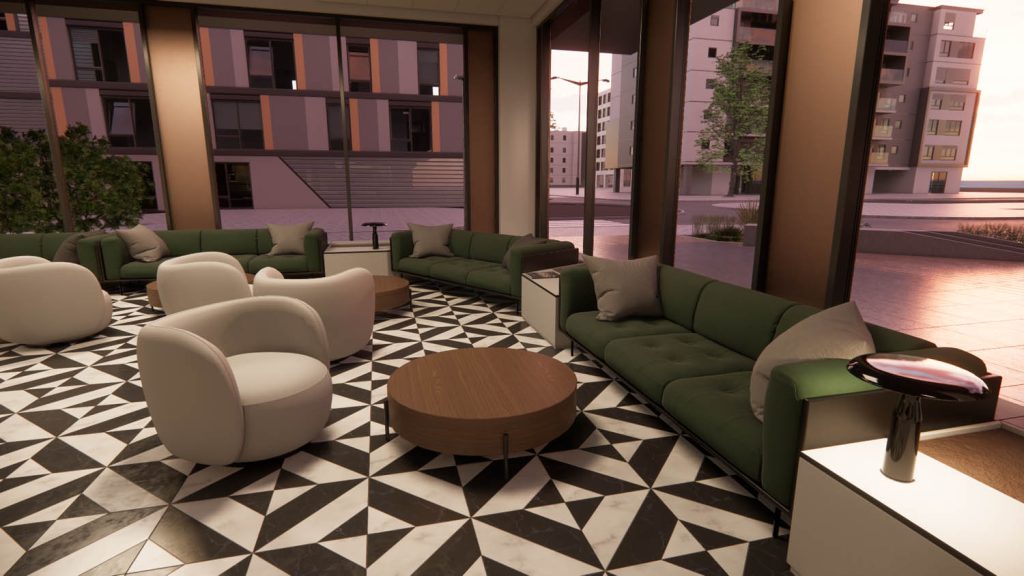Real-time viz is doing what sketching never could, bringing inclusivity to the design process and empowering stakeholders to better collaborate. Roderick Bates, head of integrated practice at Enscape, shares his thoughts on how the industry is harnessing technology to create a more effective design process and a more inclusive future
The need to communicate is a constant of the architectural design process with the techniques of communication changing over time.
Replacing or augmenting architectural sketching, digital modelling and design tools have catapulted the design process into a new realm, enabling the many stakeholders in the architectural design process—from the designer of a building to its owner and future occupants—to not only experience a building before it is built, but to have a hand in creating it.
The impact of digital visualisation is substantial. Teams can work together and receive real-time project updates regardless of their geographic location. Tighter collaboration provides them with workflow efficiencies, helping to avoid delays and change orders, and ultimately leading to lower costs, happier clients, and more impactful outcomes.
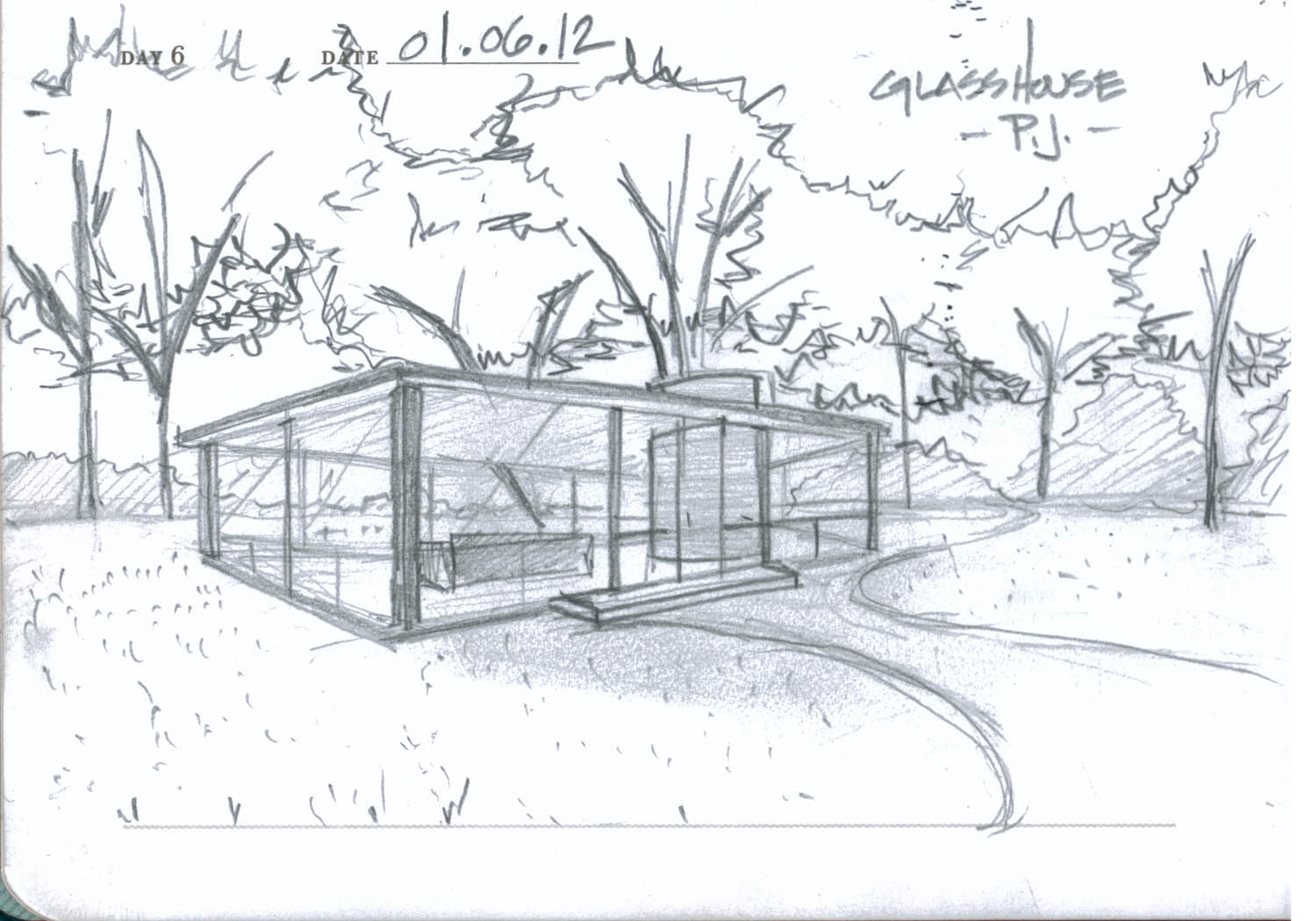
These technological contributions provide the industry with a glimpse of what’s to come and give its stakeholders a role in creating the change and evolution they’d like to see. This article takes a closer look at the progression of the design process from the perspective of architectural sketching, how technology has fortified its shortcomings, and how design constituents are leveraging and adapting real-time visualisation to create their own unique future of architectural communication.
The rich history of sketching
It’s believed that sketching has existed since Paleolithic times, before the invention of written language. There’s evidence of it being used to convey architectural ideas as far back as the Mesopotamian era, the world’s oldest recorded civilisation. The craft has served, and continues to serve, its purpose, quickly clarifying and displaying an idea.
Not only does a sketch communicate a concept, but it’s also seen as a treasured art form, valued for the skill behind the work as well as the permanence of its nature. Just last year, a miniature Leonardo DaVinci sketch sold at auction for more than $12 million, a record amount for the Renaissance artist. While architectural sketches from modern-day contemporaries don’t fetch as high a price, they are well regarded in art collections around the world.
Despite their beauty and longevity, these early drawings require an artistic expertise that belies their visual simplicity, relegating the practice to those skilled in the art, placing a hard limit on the number of images that can be produced. In contemporary design processes, the result is sketching remains a niche process, and some would say a lost art.
Making design more inclusive
Technology shifted the methodology of design from a pre-digital phase being primarily defined by sketching, watercolour paintings, and physical models, to computer-generated renderings.
With the advent of GPU-enabled real-time visualisation, the function of visualisation changed. It was now possible to create a shared understanding and up-to-the-minute updates on a project design in real-time. All design team members, from architects to project managers, principals, consultants, and clients, can share a common visual reference based on the underlying design model. The role of real-time visualisation thus assumed the mantle once held by sketching, but without the skill bottleneck of providing the visual basis for communicating and collaborating during the design process.
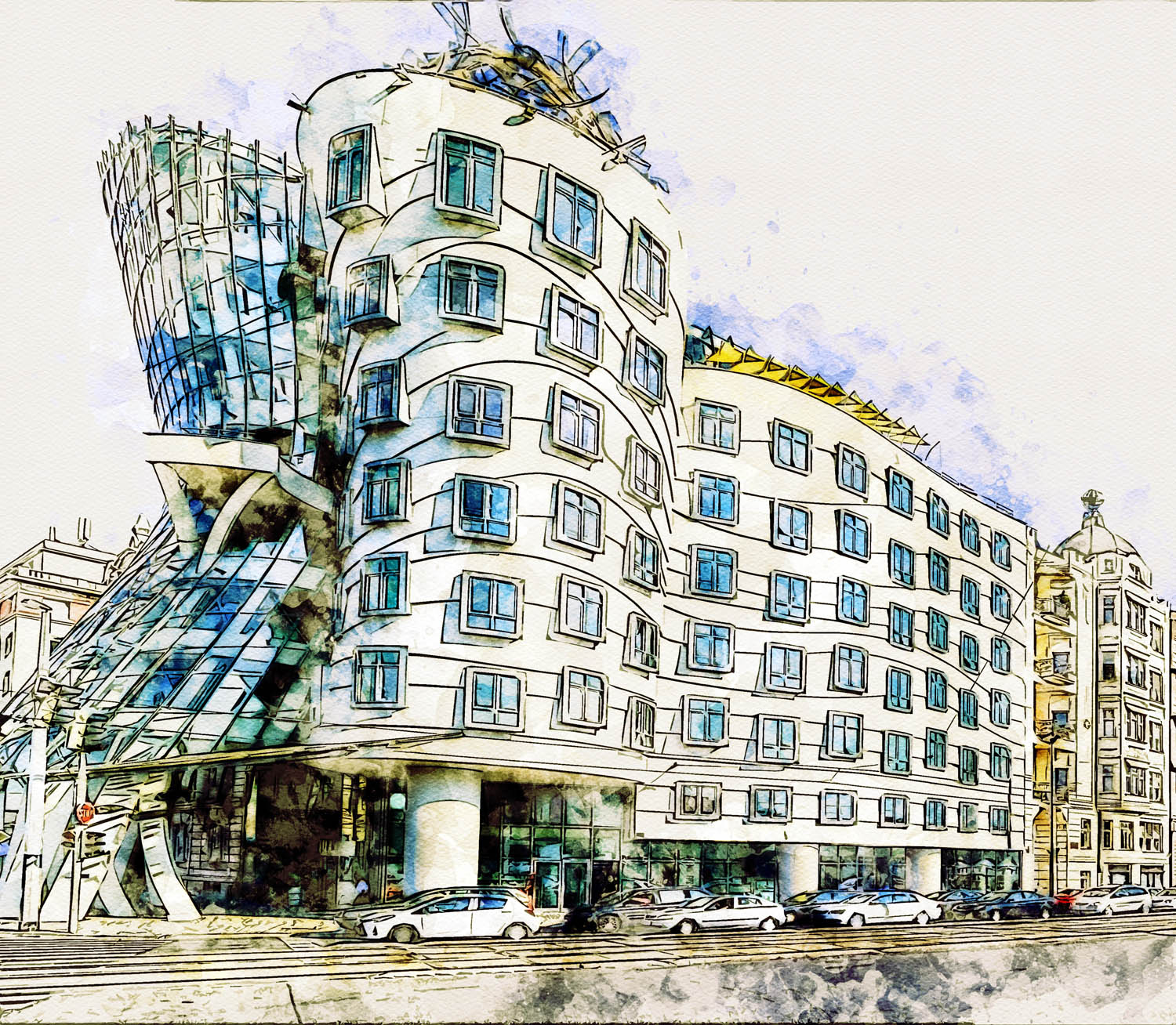
Real-time visualisation had the added benefit of speaking to the full diversity of stakeholders on a project in a common visual language, effectively lowering the barrier of participation during design and enabling everyone to contribute as equal participants.
This process of creating a shared understanding of a design, updated to the minute and entirely faithful to the design model, is a technology-enabled twist that replicates the function of sketching. While sketching is a skill held by very few, real-time visualisation is accessible by anyone with the right hardware and software, introducing a far more inclusive process.
While 3D design tools and real-time visualisation are powerful enablers, leading to better communication and ultimately improving end products, there’s room for new advancements. The opportunity is for designs, and perhaps more importantly, the emotional impact of a design, to be shared in ways that go well beyond what is possible with sketching or rendering alone.
Seizing the opportunity
The best way to understand a space is to interact with it. Real-time rendering and virtual reality enable interaction with 3D modelling tools, bringing emotion, opinions, and agency into the equation, and allowing project stakeholders to collaborate throughout the entire lifecycle of a project.
The power of that inclusive experience transforms projects. Through real-time architectural visualisation tools, stakeholders, including a structure’s future occupants and neighbours, can experience a building as it is being designed in a high-quality immersive experience.
They are able to verbalise the opinions, suggesting, for instance, a window for a better view, and collaborating to collectively create what will become a part of their daily lives and their community.
Real-time visualisation provides a type of rapid, informal communication that is so essential for an effective design process. And, it introduces an opportunity for the Augmented Reality (AR) and Virtual Reality (VR) tools that are becoming standard in the industry, challenging users to create designs and, perhaps more importantly, to share the emotional impact of designs in ways that go beyond what is now possible.
This results in a future where the design process can be truly inclusive, where real-time visualisation means the ideas, opinions, emotions, and feedback of all project stakeholders can be generated and incorporated into a design.
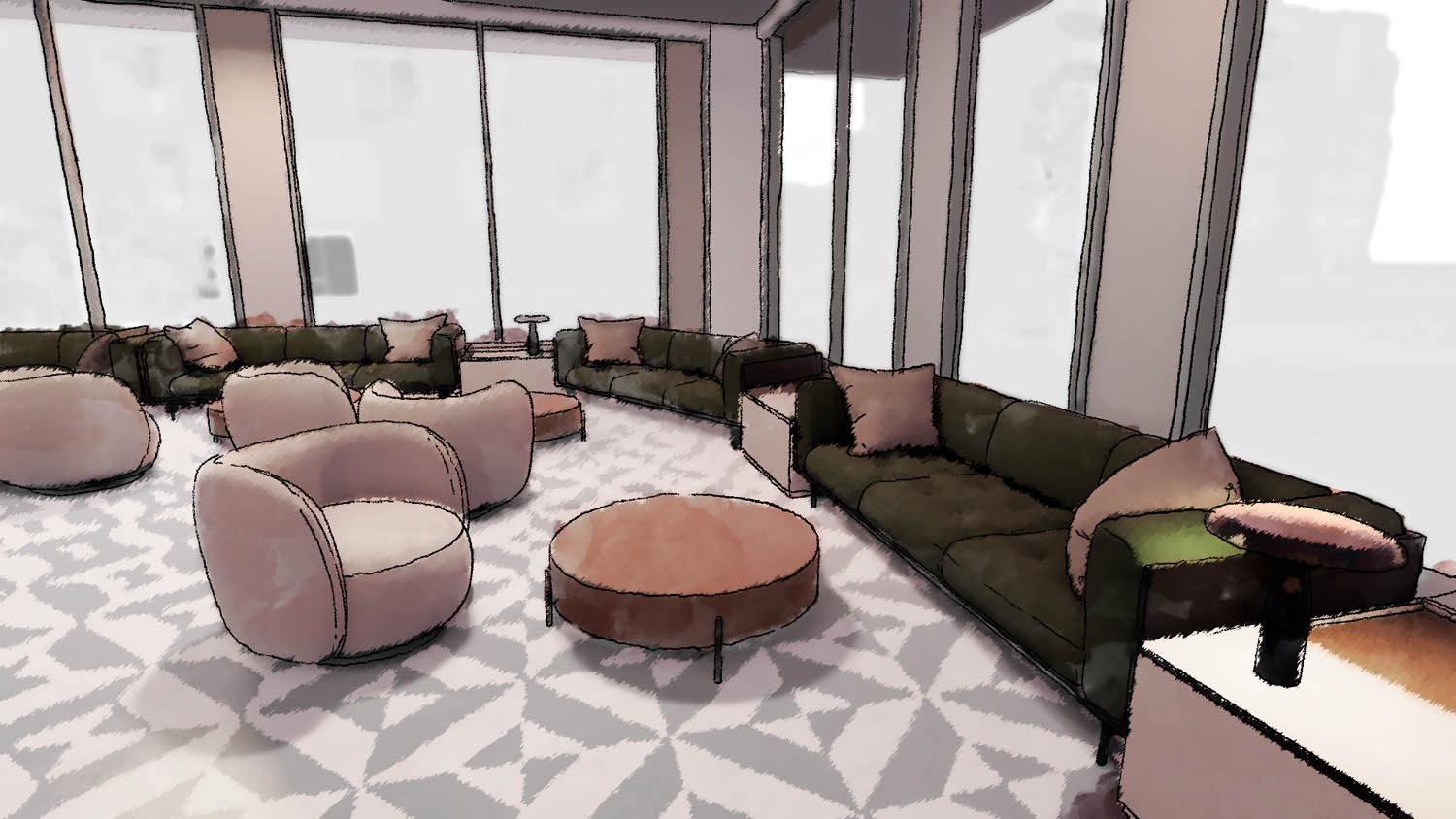
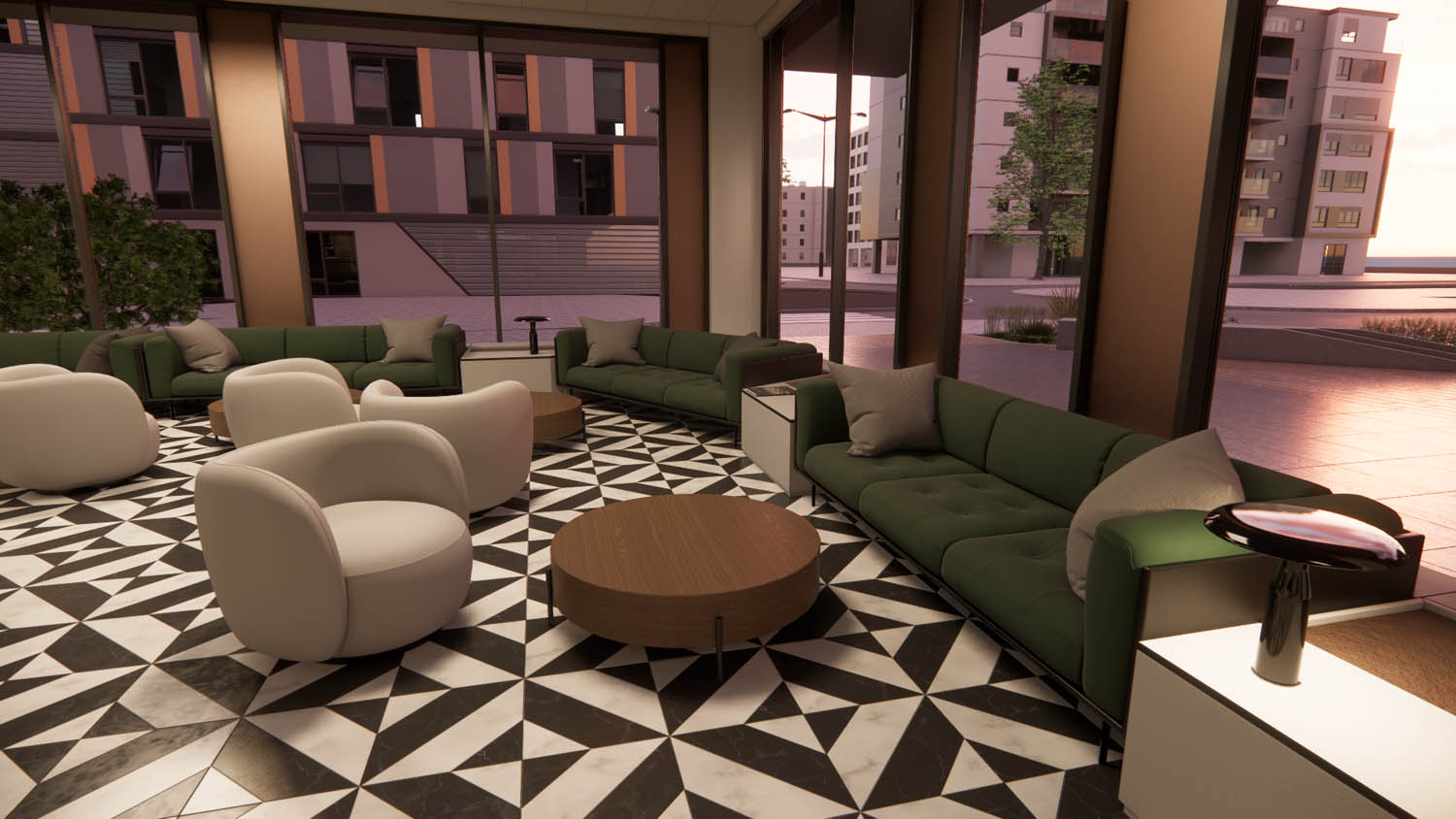
Potential future technology to further push visualisation as the modern equivalent of sketching include:
1) Instead of jumping between sketching and rendering design tools, a singular tool can combine rendering and sketching workflows into one software solution, enabling designers to create visuals that will allow just the right type of communication, without interrupting the design. Designers are already using sketch style visualisations like the one above in order to better communicate the state of the design and to draw their clients’ attention to certain aspects of the design. However, creating such images can be time consuming and hard to replicate, indicating a need for a more streamlined workflow that would allow for highly communicative images to be generated easily and intuitively.
2) Enabled by VR, innovation can allow for collaborative sketching. Rather than just verbalising a contribution, a person can “draw” over a model in VR with other participants simultaneously viewing and participating in the feedback.
3) Leveraging open source tools, the design process can take a mixed media approach, for instance, capturing the texture of a material such as a rock from the real world and applying it to a rendered object to create a more realistic visualisation.
4) Looking further down the innovation pipeline, designers can train an artificial intelligence (AI) engine with samples of their preferred sketching style—essentially imparting their unique language and fingerprint on a project—and a rendering can then be automatically modified to reflect their style. AI-enriched workflows can bring emotion to design renderings, creating evocative experiences for participants in the process.
From sketching through the evolution of digital tools, the architectural industry’s needs have evolved, and innovation continues to find new and better ways of meeting them. The opportunities for advancement are endless, empowering designers to more accurately convey concepts, gather valuable feedback, and strengthen relationships through more immersive, inclusive experiences.

